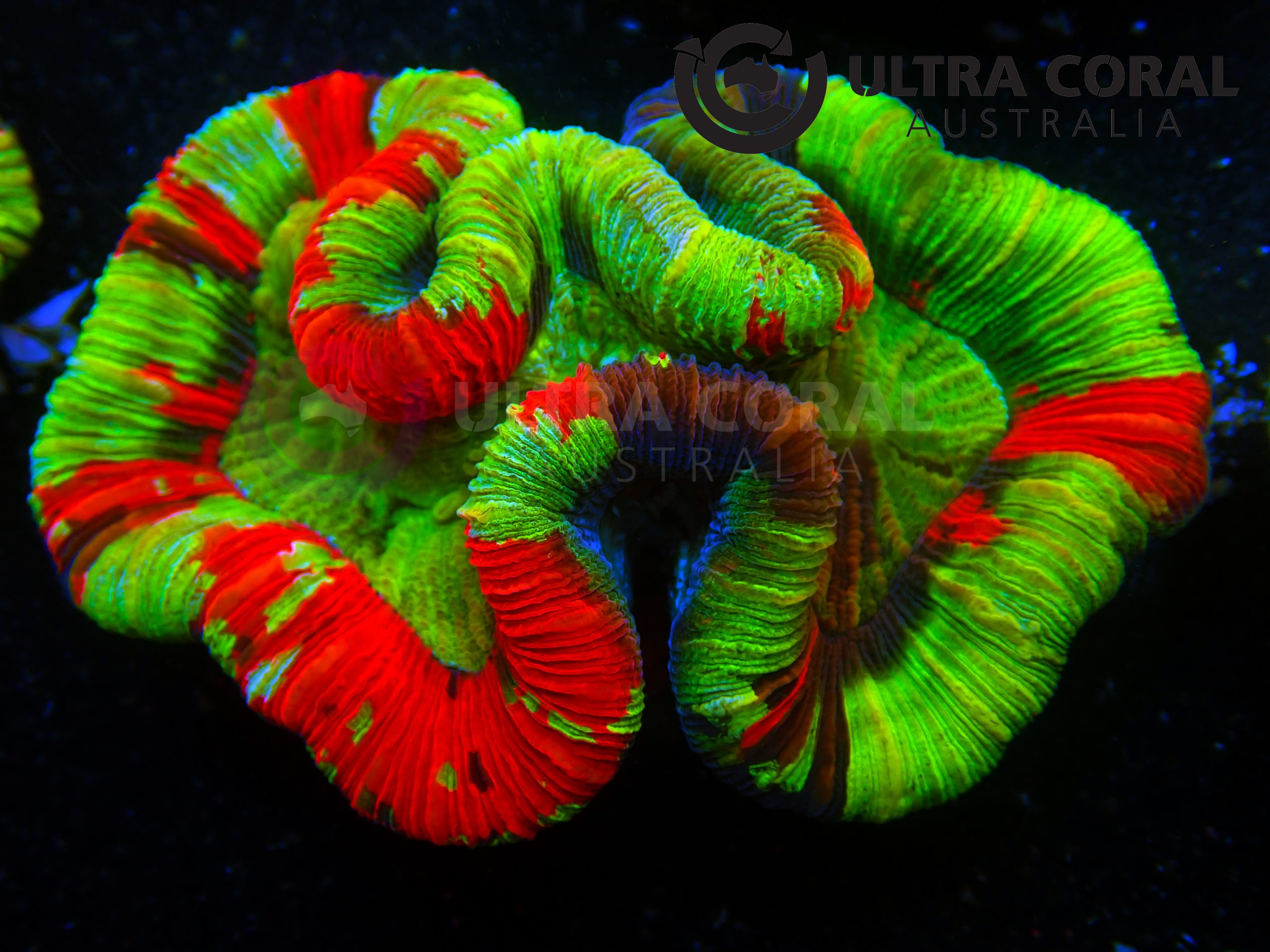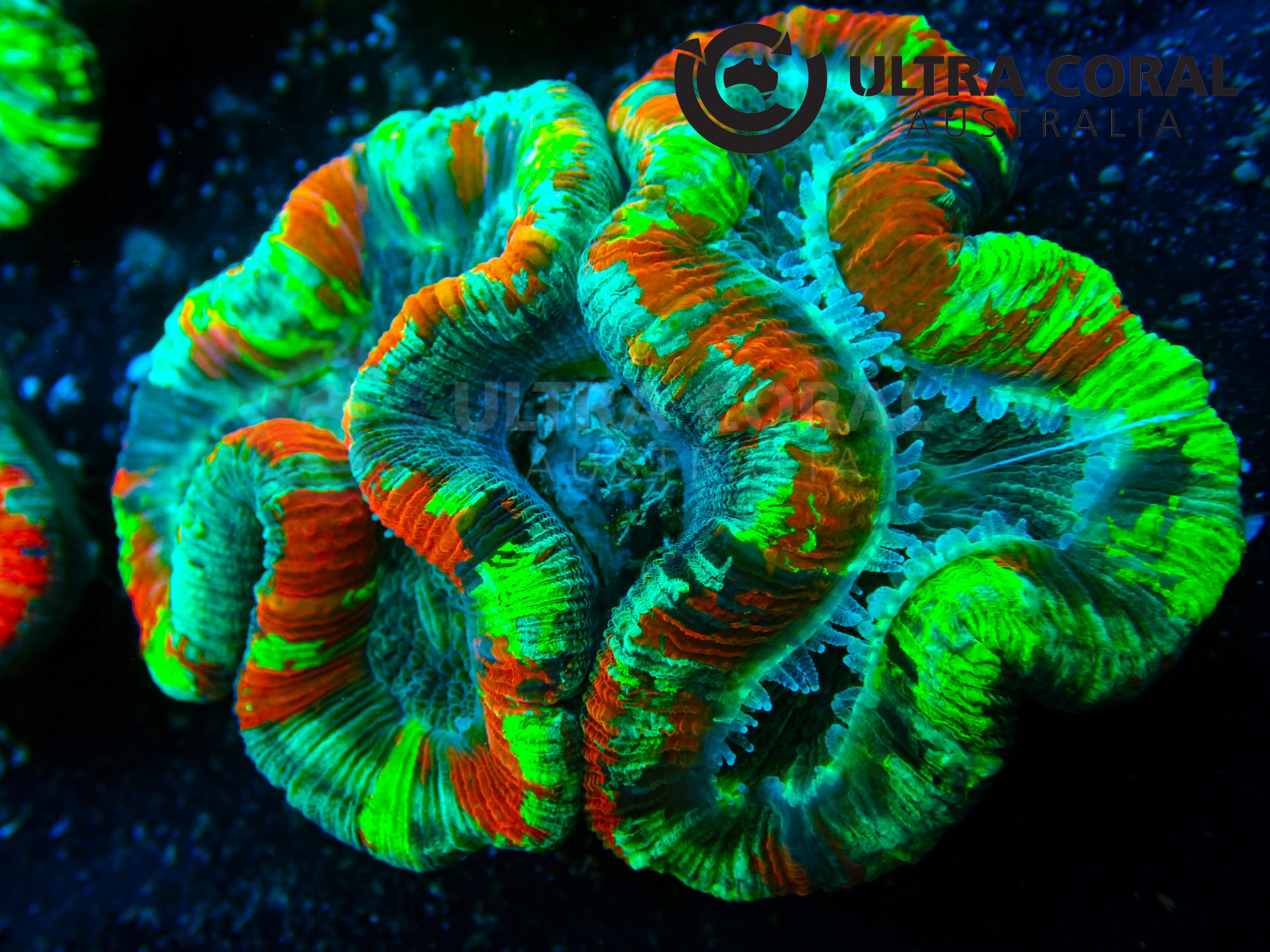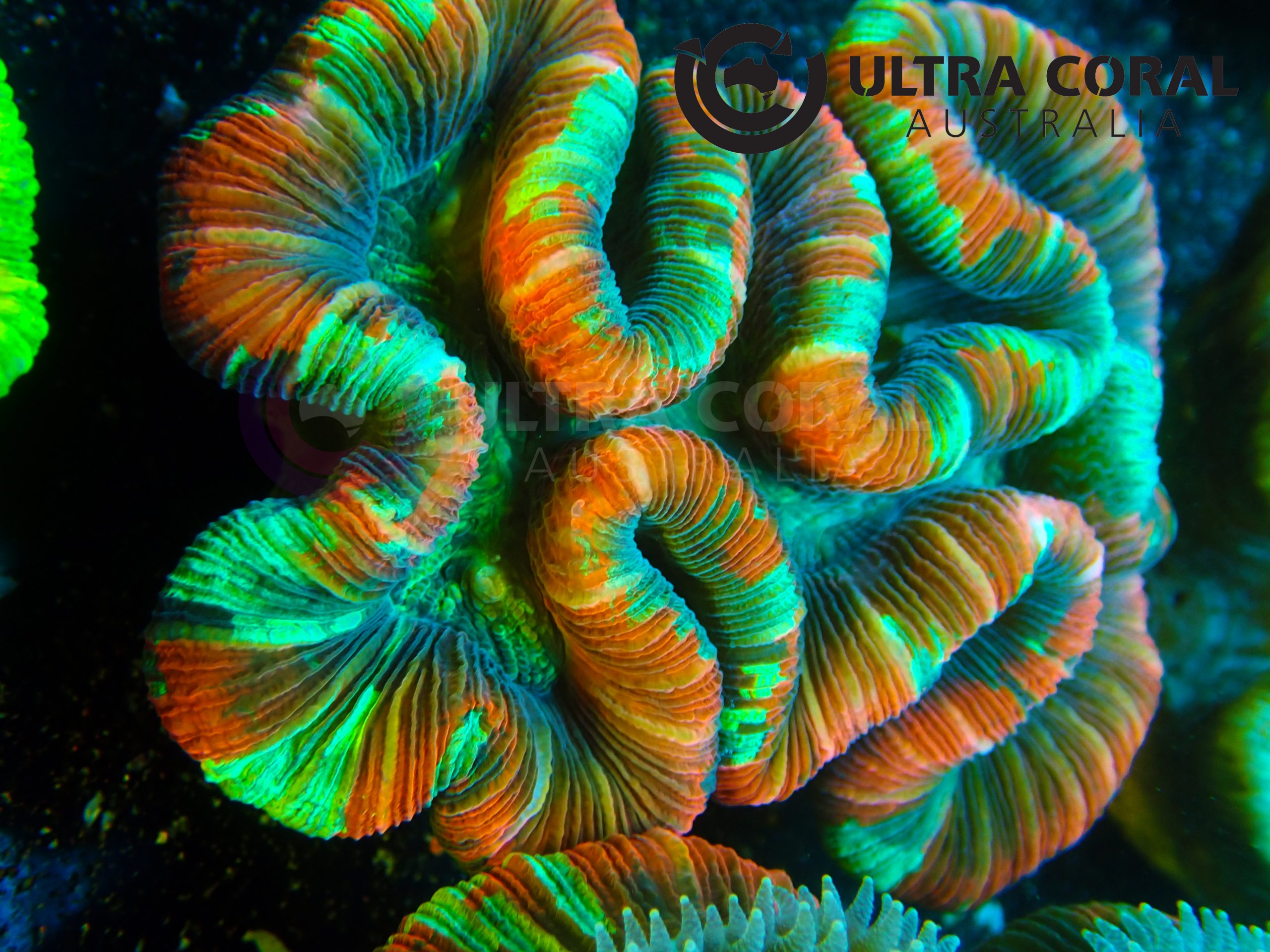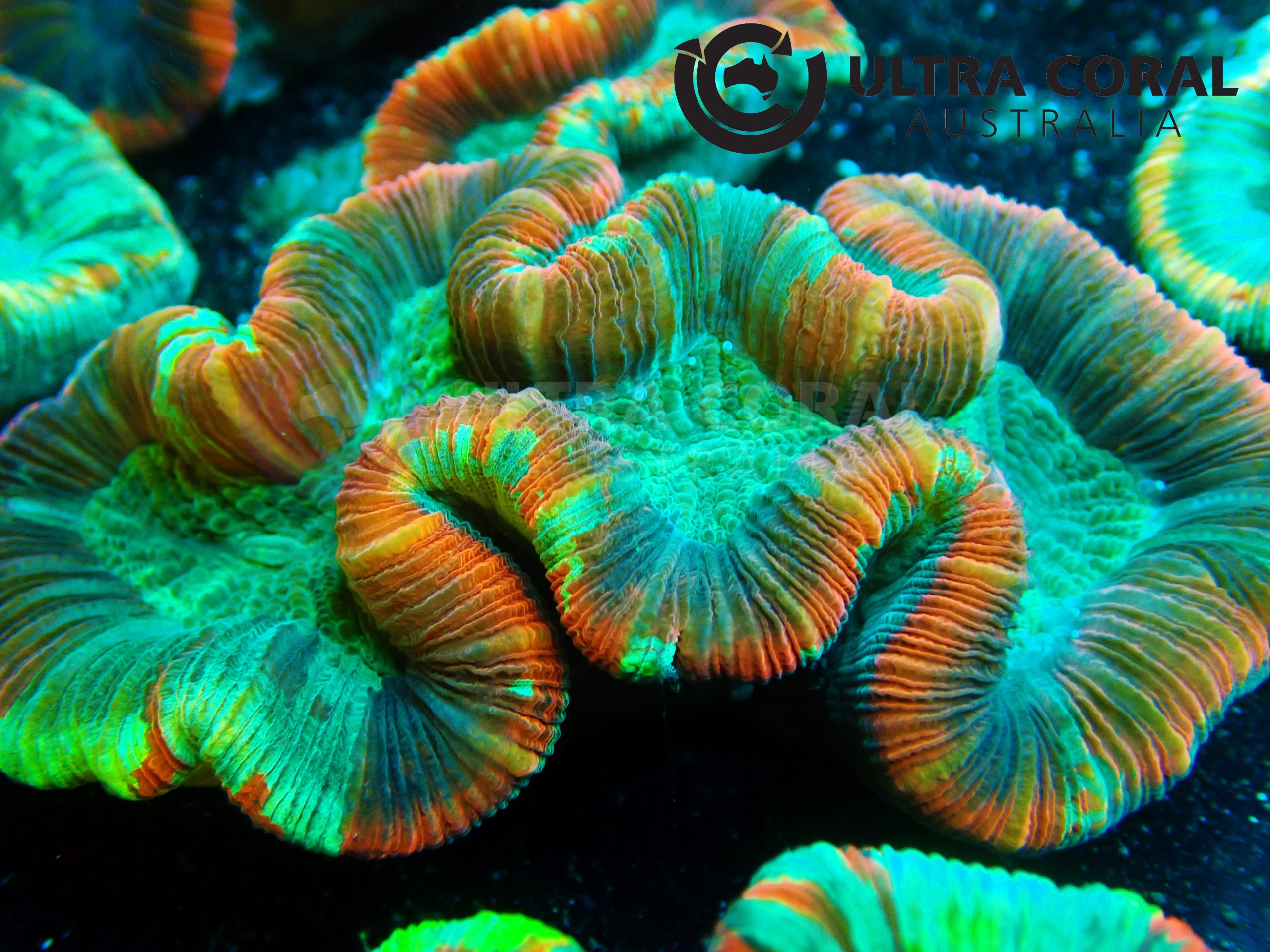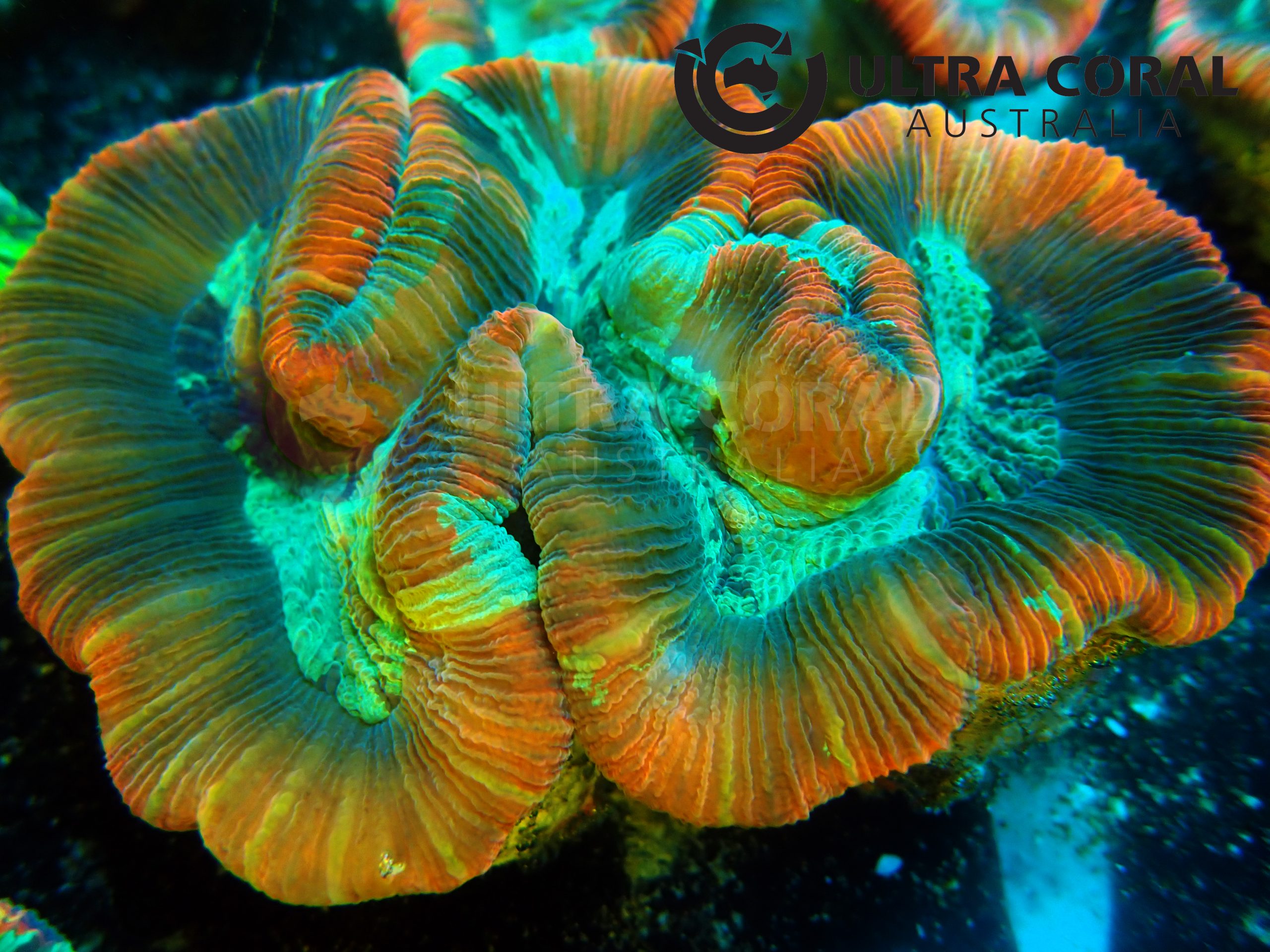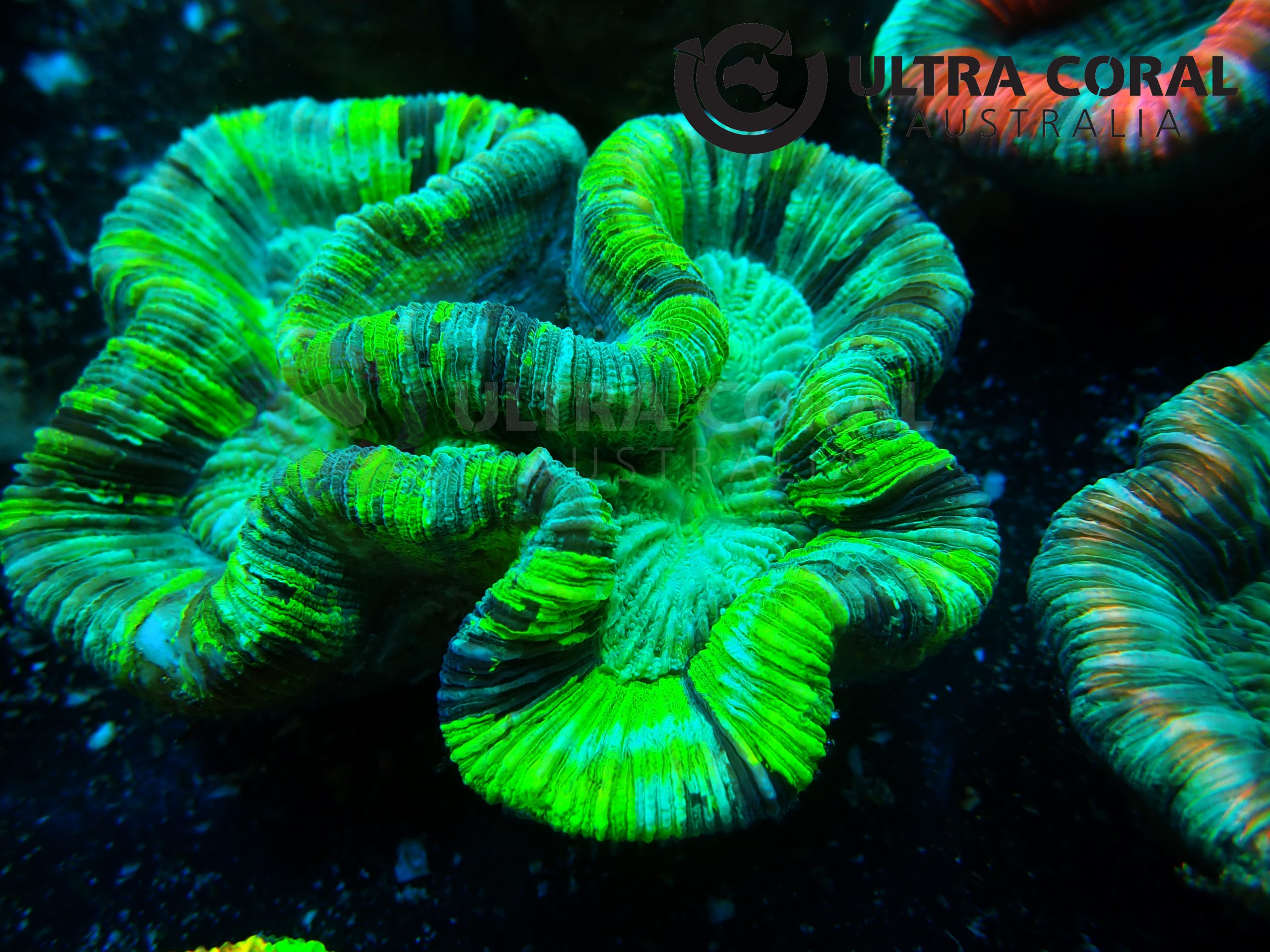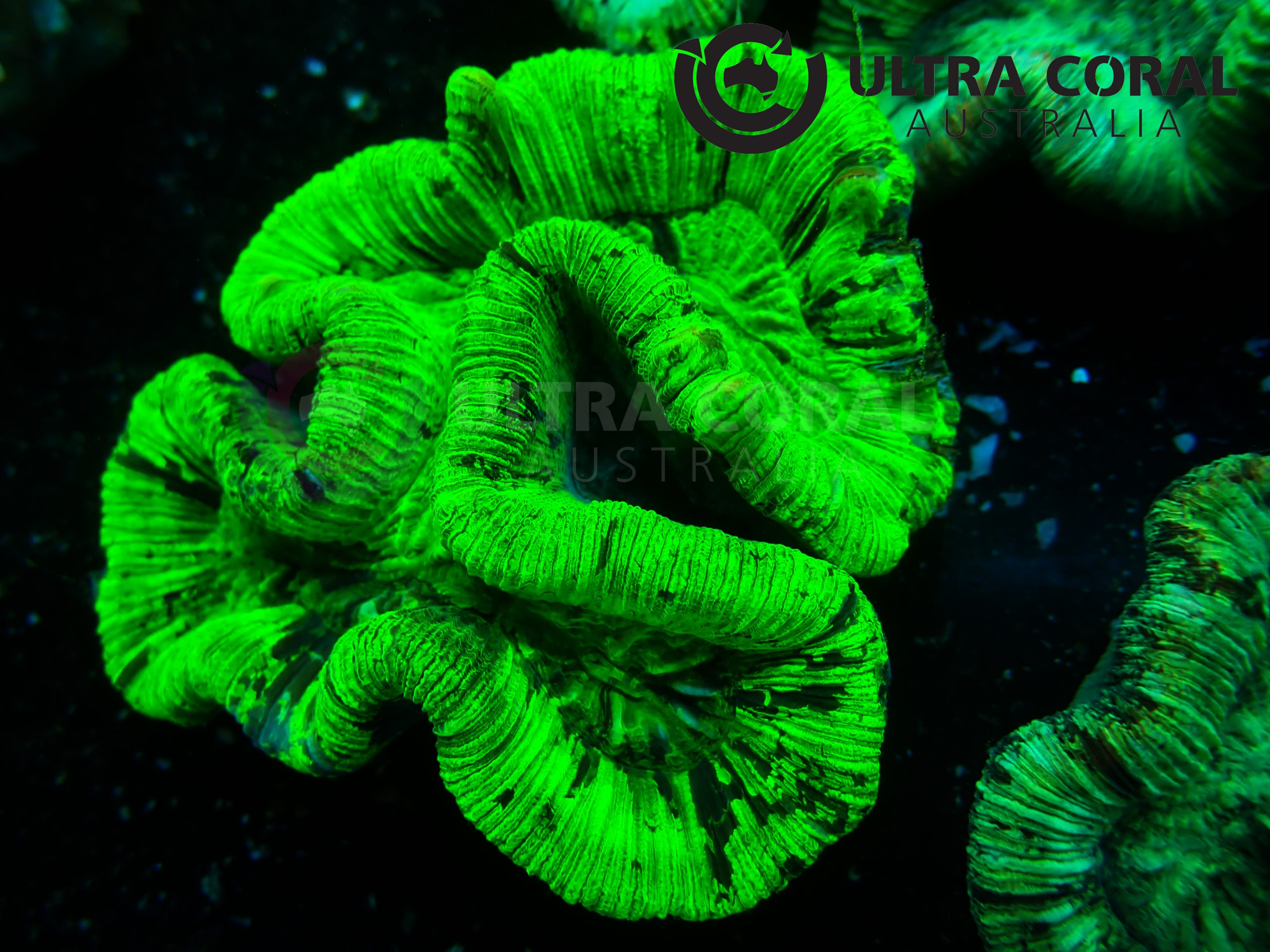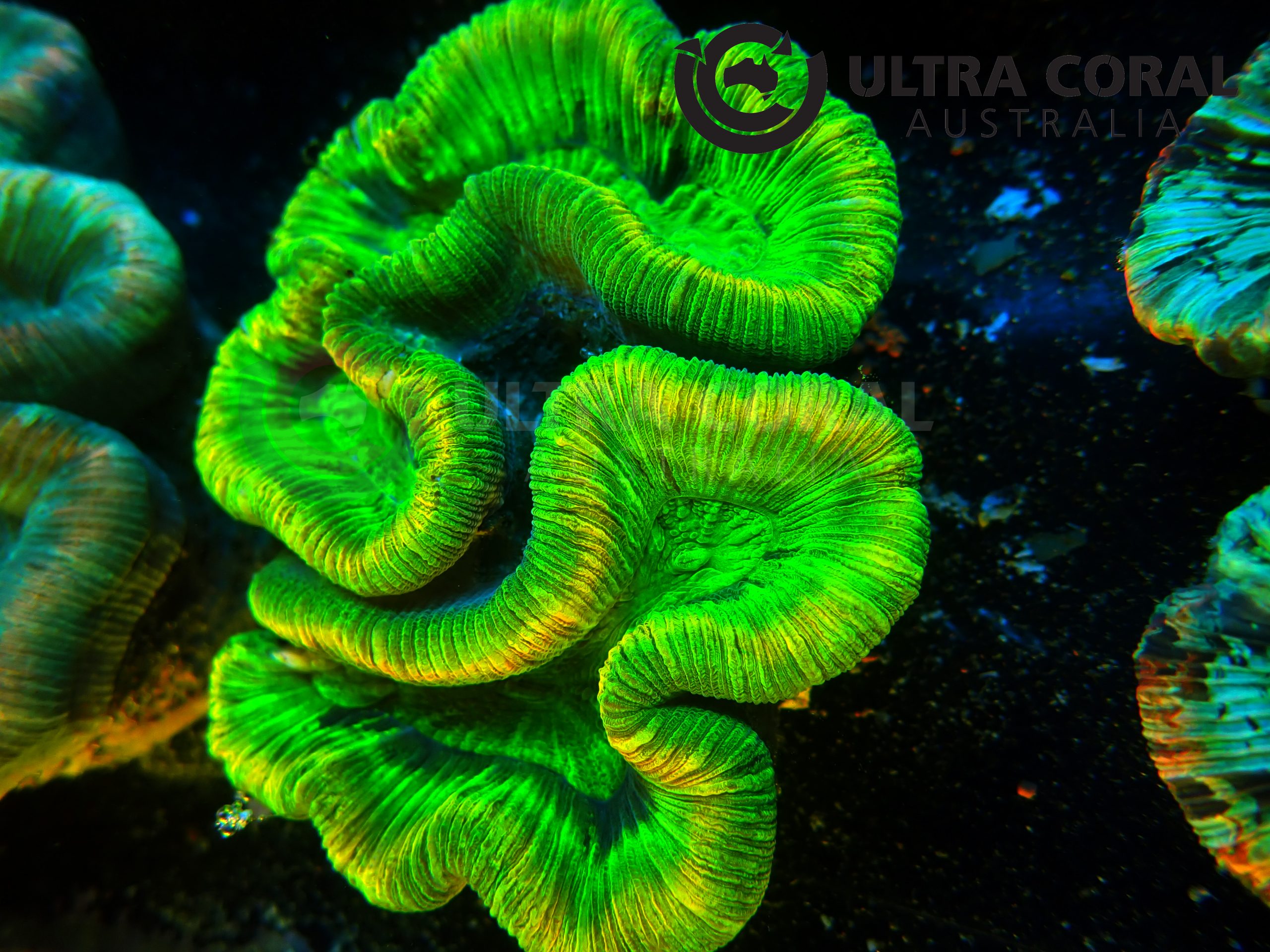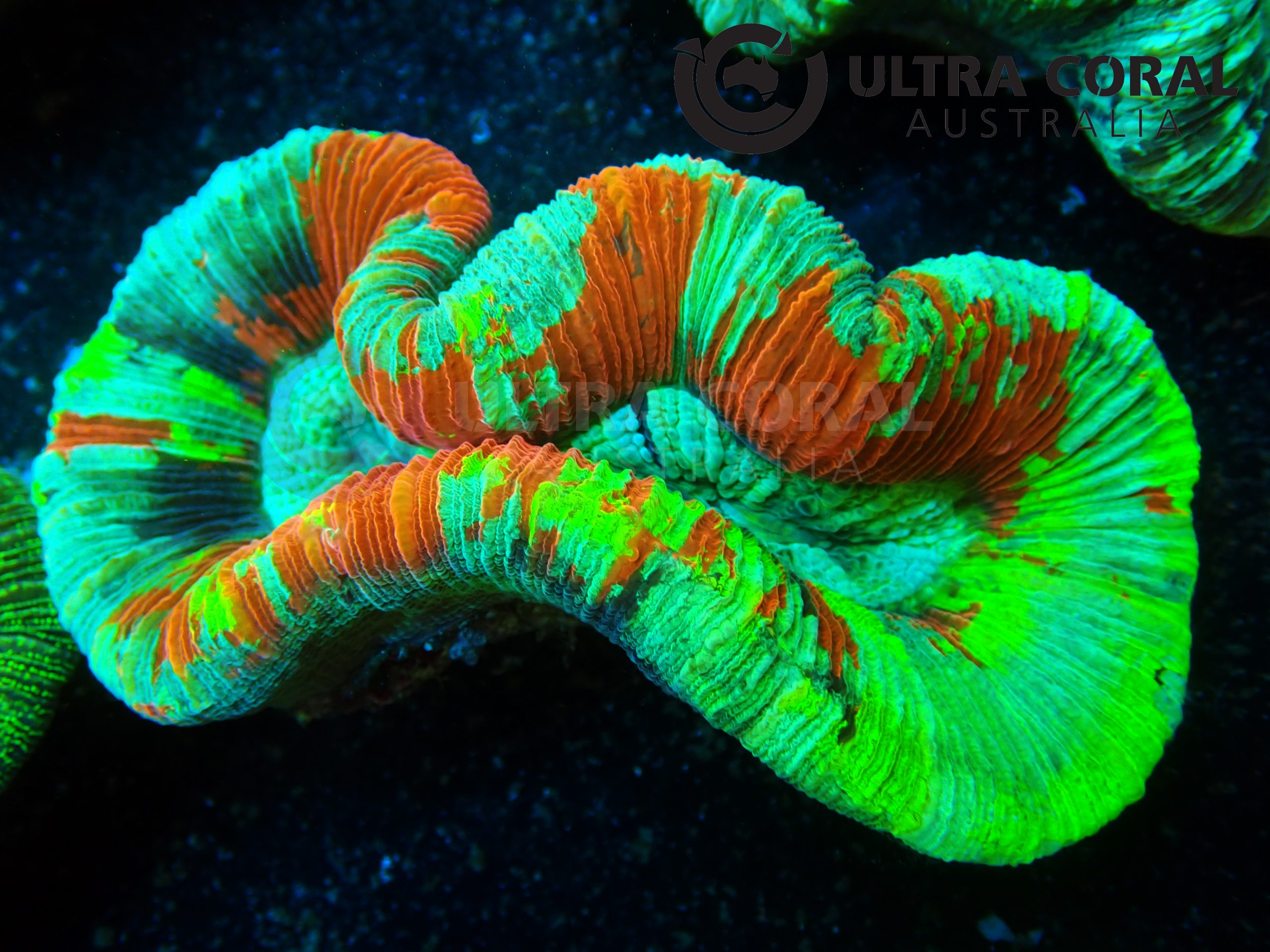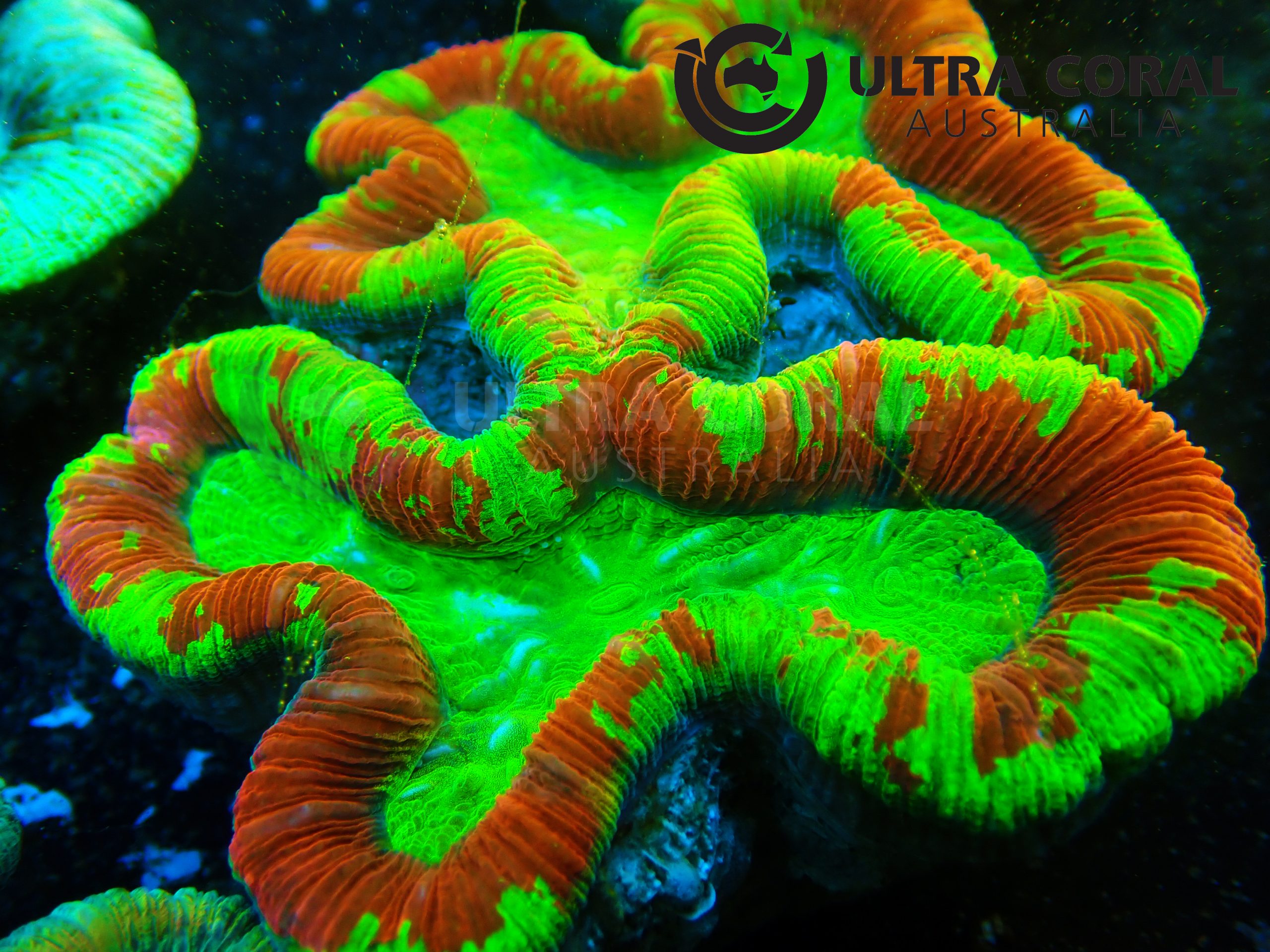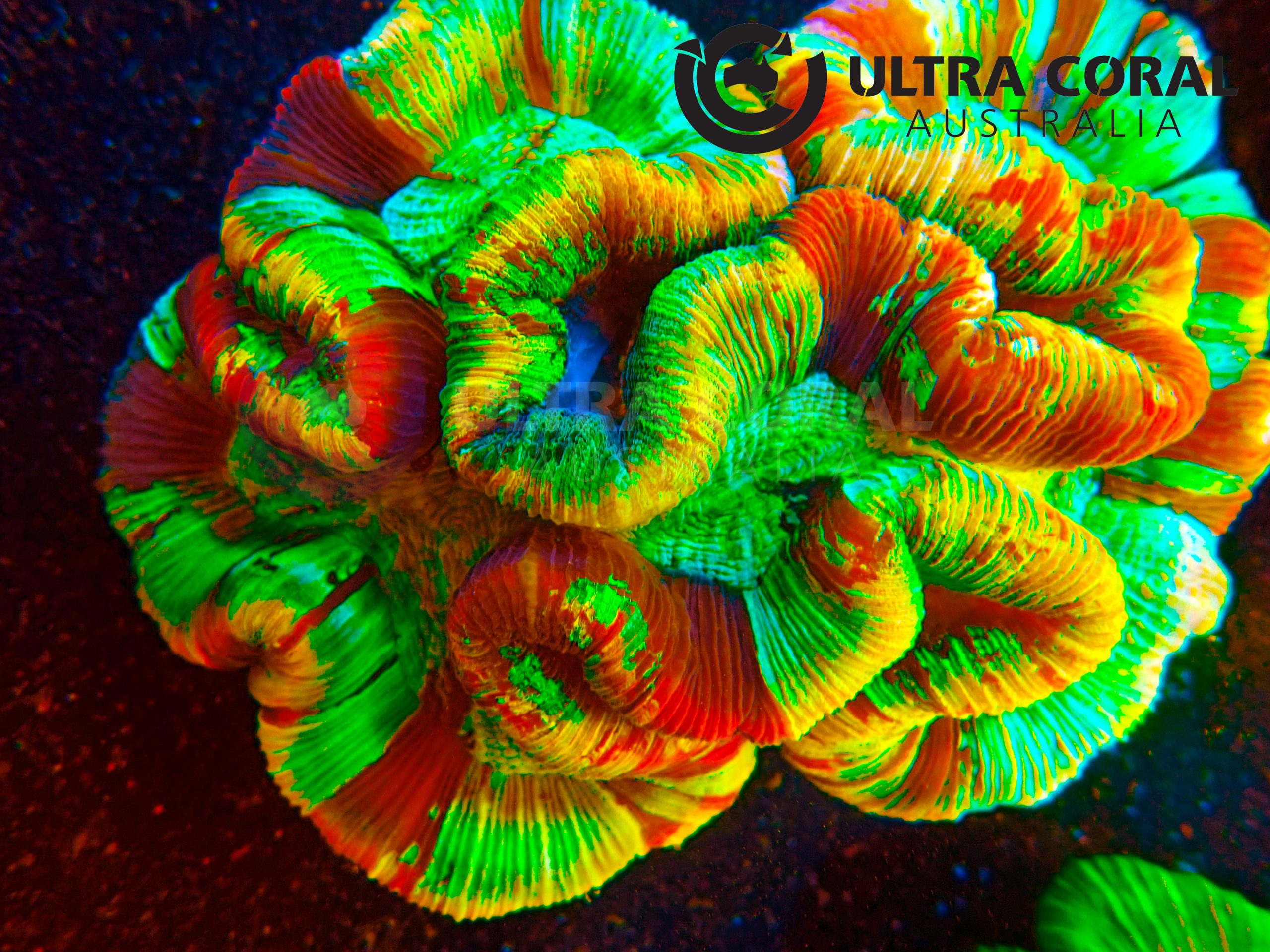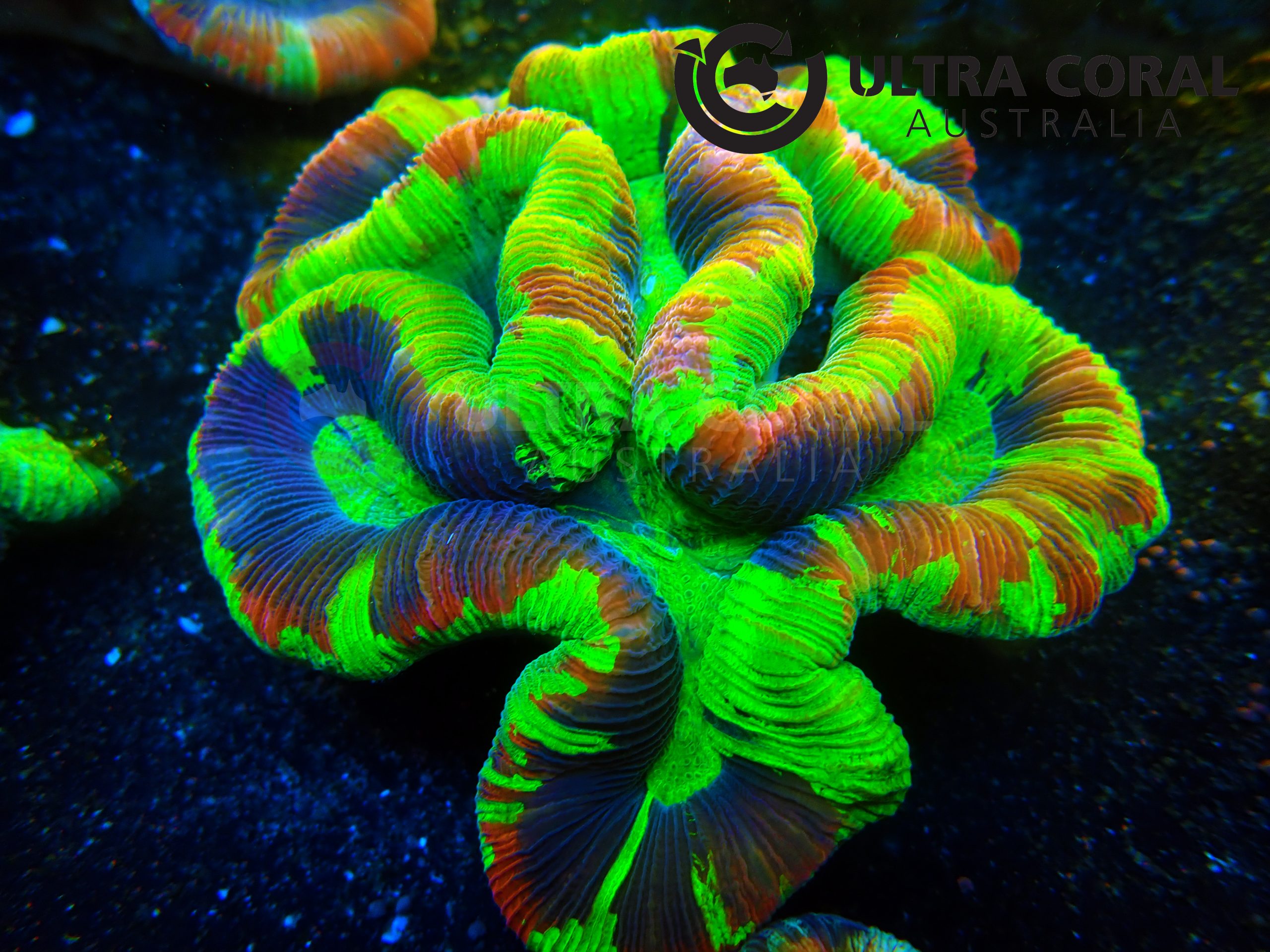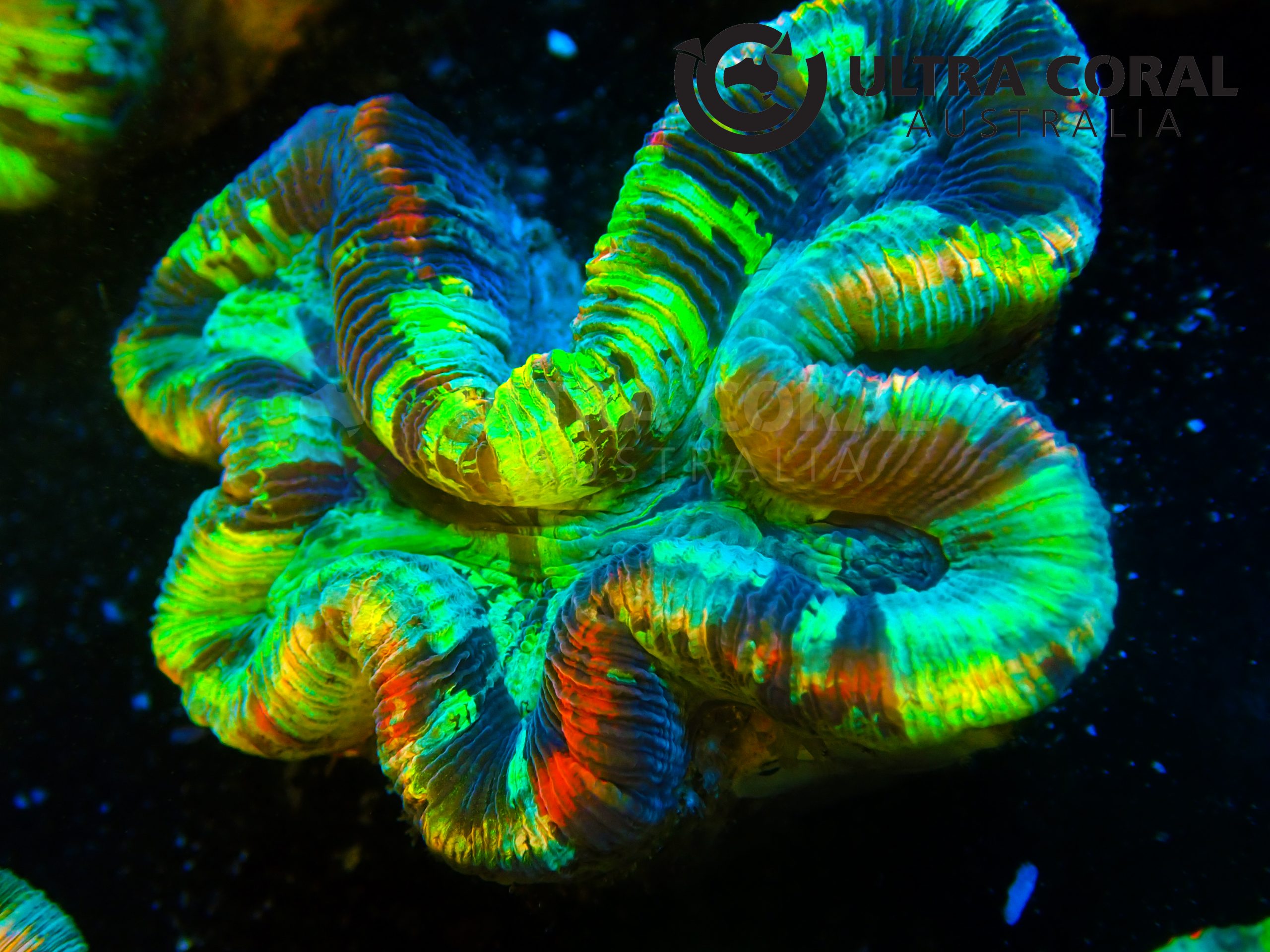Trachyphyllia geoffroyi

Trachyphyllia geoffroyi are commonly known as Open Brain Coral, Crater Coral, Dome Brain Coral, or Folded Brain Coral.
Their polyps are large fleshy mantles, and they come in a variety of bright colors including yellow, red, pink, brown, blue, green, or a combination of colours.
In the wild, they are often found as free-living, solitary individual living along a reef base on muddy or sandy bottoms.
This species is described as a free-living coral, as juveniles, like most other corals, they are attached to something solid (e.g. rocks or shells), but as they grow they get heavier and then break off, becoming free-living polyps with a cone-shaped bottom that helps them anchor in soft-bottom environments.
They are voracious eaters, and if not fed well can start to recede. The polyps tentacles come out at night to feed and may come out during the day when food is present.
Basic Water Parameters
pH
8.0 to 8.3
Salinity
34 - 36ppt
Temperature
24.0 - 26.0 Celsius
Husbandry Requirements
Lighiting
180+ PAR
Flow
Passive circulation - Some turbulence required
Aggressiveness
Limited ability to damage other corals.
Acclimation Guide
- It is highly recommended to acclimate all corals to a new environment to prevent shocking corals.
- Place the corals in the water from the packing bags and slowly add the water from new environment (Dripping method is recommended).
- Use the water parameter above as a guide.
- When the vessel becomes full , replace the water with the new environment water by a small amount at a time.
- Ensure the water temperature matches with the new environment’s water.
- After the corals have spent adequate time in the acclimation water, gently place the corals to a new environment.
- It is recommended to place new corals under lower light intensity than usually required. Once corals show no signs of stress, it can be moved to higher lighting area gradually.”


